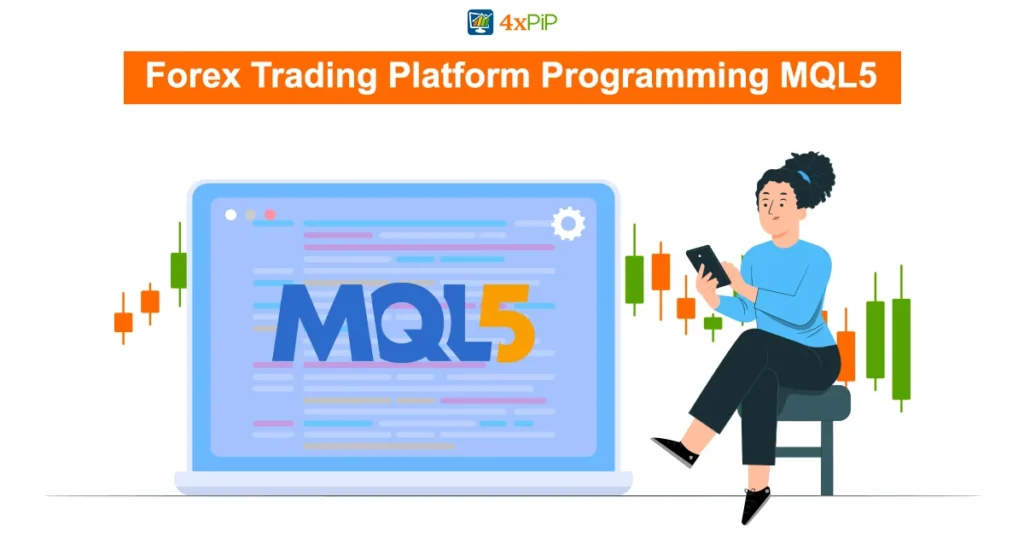In the dynamic realm of trading, the ability to anticipate trends can be a pivotal factor in boosting profits. This blog will unravel the art of anticipation, providing insights into practical strategies and tools. At 4xPip, your go-to source for trading expertise, we understand the significance of making informed decisions. Feel free to reach out to our experts at [email protected] for personalized guidance tailored to your trading journey.
Anticipation in Action:
Anticipation in trading is not about crystal ball predictions but rather crafting strategies with high success probabilities. Traders employ technical tools like moving averages, RSI, stochastic, and chart patterns to anticipate market moves. By focusing on situations where a trend or market movement can be foreseen, traders position themselves for success. This strategic approach, differentiating anticipation from futile attempts at prediction, is crucial for sustainable profits.
In real-time trading scenarios, experienced traders actively manage open positions, adjusting stops, and assessing if any modifications are needed. For instance, using exponential moving averages (EMA) as a crossover signal, traders can enter and exit positions in a trending market. Anticipation, in action here, allows for quick decision-making, enabling traders to capitalize on profitable setups. This exemplifies the essence of anticipation – a calculated and strategic approach to navigating the market’s uncertainties.
The Power of Technical Tools:
Technical tools serve as the backbone of anticipation; additionally, they offer traders valuable insights into market dynamics. Moving averages, RSI, stochastic, and recognizable chart patterns play a pivotal role in creating strategies with a high probability of success. Moreover, these tools provide a clear and concise view of potential market moves, empowering traders to make informed decisions. The power lies in the ability to interpret these tools effectively; furthermore, converting data into actionable insights is crucial for success.
Understanding the market’s pulse through technical tools enables traders to gauge the probability of success for a given trade. Whether it’s identifying trend strength using moving averages or spotting potential reversal points with RSI, these tools equip traders with the foresight needed to boost profits. As you delve into the world of technical analysis, remember that mastering these tools is an ongoing process that significantly contributes to your trading success.
- Data-Driven Decision-Making: Technical tools, including moving averages, RSI, stochastic, and chart patterns, provide a data-driven approach to decision-making.
- Probability Assessment: These tools enable traders to assess the probability of success for a given trade, enhancing the strategic aspect of anticipation.
- Trend Strength Identification: Moving averages help identify the strength of a trend, guiding traders in understanding whether to anticipate a continuation or potential reversal.
- Reversal Point Recognition: Tools like RSI and stochastic assist in recognizing potential reversal points, a crucial aspect of anticipating market movements.
- Chart Pattern Interpretation: Recognizable chart patterns, when combined with technical tools, offer a comprehensive view, empowering traders to anticipate and act with confidence.
The Role of Exponential Moving Averages (EMA):
Among the arsenal of technical tools, Exponential Moving Averages (EMA) stand out for their effectiveness in anticipating market trends. EMAs, like the 10-period and 20-period EMAs, provide valuable signals for entry and exit points in a trending market. A classic example involves the British pound/U.S. dollar (GBP/USD) currency pair, where an EMA crossover signals long or short positions.
In the GBP/USD example, the power of anticipation becomes evident. Traders can utilize EMAs to quickly assess potential trades and manage positions. By setting stops based on longer-term trend EMAs, traders mitigate risks and increase the likelihood of profitable outcomes. This showcases how EMAs, as a technical tool, contribute to the art of anticipation in trading.
Emotion-Free Trading:
Emotions can be both a trader’s ally and adversary. However, to anticipate trends effectively, it’s crucial to minimize emotional influence during trades. Monitoring trades in real-time and adjusting according to a predefined plan helps ensure that emotions don’t derail the original strategy. The plan, formulated before entering a position, acts as a guide during active trades, promoting objectivity.
While complete removal of emotion might be challenging, maintaining a structured plan allows traders to navigate market volatility with discipline. The power of anticipation lies in its ability to curb emotional reactions, providing a clear path for decision-making. By actively managing trades and sticking to a predefined plan, traders can foster an environment conducive to making rational decisions.
Staying Disciplined and Objective:
Adherence to Trading Plan:
Importance: The foundation of trading discipline lies in the strict adherence to a thoughtfully crafted trading plan.
Rationale: A well-defined plan acts as a roadmap, providing a structured approach to navigate the complexities of the financial markets. Traders must resist the temptation to deviate from the plan, ensuring that decisions are guided by a strategic framework rather than impulsive reactions to market dynamics.
Execution of Predetermined Strategies:
Significance: Disciplined trading involves the consistent execution of trades based on predetermined strategies.
Purpose: Traders should avoid making decisions on a whim and instead follow established strategies. This consistency fosters a systematic approach, reducing the impact of emotional responses to market fluctuations. By adhering to proven strategies, traders enhance the probability of making informed and rational decisions, even in the face of uncertainty.
Adjustment of Stops and Exits:
Crucial Aspect: Discipline in trading extends to the proactive adjustment of stops and exit points as market conditions evolve.
Reasoning: Traders must be adaptable and responsive to changing market dynamics. This involves regularly reassessing positions and making necessary adjustments to protect gains or limit losses. By having a dynamic approach to risk management, disciplined traders ensure that their capital is safeguarded in various market scenarios.
Objective Reliance on Technical Tools:
Essential Element: Objectivity is maintained by relying on technical tools and comprehensive market analysis.
Role of Objectivity: Disciplined traders base their decisions on concrete data and technical analysis rather than subjective opinions or emotional reactions. This objective approach allows for a more rational and fact-driven decision-making process, contributing to consistent performance over time.
Resilience in the Face of Market Fluctuations:
Necessity: Staying disciplined requires maintaining resilience in the face of unpredictable market fluctuations.
Outcome: Traders who adhere to their plans with discipline are less likely to be swayed by emotional responses to short-term market movements. This resilience allows for a focused and rational mindset, promoting a long-term view and mitigating the impact of momentary market turbulence on overall trading performance.
Essential Risk Management for Successful Trend Anticipation:
Mastering the art of anticipating trends in trading goes hand in hand with effective risk management. This blog will highlight key risk management strategies to help traders navigate uncertainties and enhance their ability to anticipate trends successfully. At 4xPip, we prioritize not only maximizing profits but also minimizing potential losses. Reach out to our experts at [email protected] for personalized insights tailored to strengthen your risk management practices.
Understanding and Acknowledging Risk:
Recognizing the inherent risks in trading, including market, operational, and liquidity risk, is the foundational step toward effective risk management. Traders need a comprehensive strategy to safeguard their capital.
Diversification:
Diversifying your trading portfolio across different asset classes or instruments is a fundamental risk management strategy. This minimizes the impact of poor-performing assets on the overall portfolio and helps mitigate risks associated with specific markets or sectors.
Position Sizing:
Determining the appropriate size for each trade is critical. Techniques like the fixed percentage method or the Kelly Criterion guide traders in optimizing position sizes based on risk tolerance and market conditions.
Stop-Loss Orders:
Implementing stop-loss orders is crucial for real-time risk management. These orders automatically close positions at predefined exit points, limiting potential losses and allowing traders to focus on new opportunities.
Risk-Reward Ratio:
Integrating a risk-reward ratio into your trading strategy helps assess potential profitability compared to inherent risks. By favoring trades with a positive risk-reward ratio, traders increase the likelihood of successful anticipatory strategies.
Continuous Monitoring and Adjustment:
Risk management is an ongoing process. Regularly reassessing risk exposure and making necessary adjustments to strategies ensure resilience in evolving market conditions.
Summary:
In the realm of trading, mastering the art of anticipation is paramount for success. This blog has explored the nuances of anticipation, highlighting its distinction from prediction and emphasizing its role in profitable trading. From the strategic use of technical tools to the practical application of EMAs and the importance of emotion-free and disciplined trading, anticipation emerges as a powerful ally. Staying disciplined, objective, and actively managing trades contribute to a trading environment conducive to rational decision-making and increased probability of success. As you embark on your trading journey, remember that anticipation, coupled with knowledge and experience, is the key to unlocking profitable trends.








